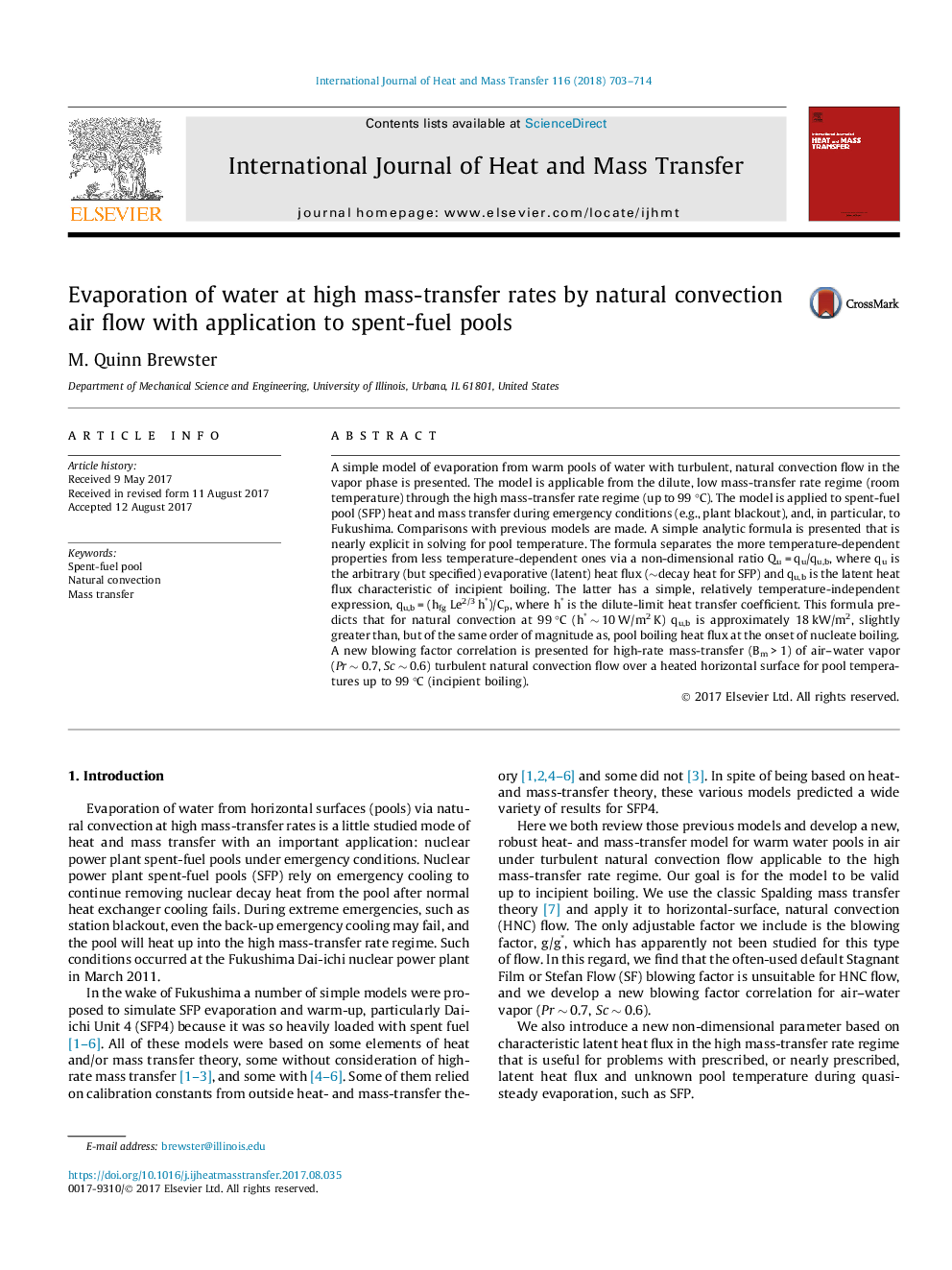| Article ID | Journal | Published Year | Pages | File Type |
|---|---|---|---|---|
| 4993793 | International Journal of Heat and Mass Transfer | 2018 | 12 Pages |
Abstract
A simple model of evaporation from warm pools of water with turbulent, natural convection flow in the vapor phase is presented. The model is applicable from the dilute, low mass-transfer rate regime (room temperature) through the high mass-transfer rate regime (up to 99 °C). The model is applied to spent-fuel pool (SFP) heat and mass transfer during emergency conditions (e.g., plant blackout), and, in particular, to Fukushima. Comparisons with previous models are made. A simple analytic formula is presented that is nearly explicit in solving for pool temperature. The formula separates the more temperature-dependent properties from less temperature-dependent ones via a non-dimensional ratio Qu = qu/qu,b, where qu is the arbitrary (but specified) evaporative (latent) heat flux (â¼decay heat for SFP) and qu,b is the latent heat flux characteristic of incipient boiling. The latter has a simple, relatively temperature-independent expression, qu,b = (hfg Le2/3 h*)/Cp, where h* is the dilute-limit heat transfer coefficient. This formula predicts that for natural convection at 99 °C (h* â¼Â 10 W/m2 K) qu,b is approximately 18 kW/m2, slightly greater than, but of the same order of magnitude as, pool boiling heat flux at the onset of nucleate boiling. A new blowing factor correlation is presented for high-rate mass-transfer (Bm > 1) of air-water vapor (Pr â¼Â 0.7, Sc â¼Â 0.6) turbulent natural convection flow over a heated horizontal surface for pool temperatures up to 99 °C (incipient boiling).
Keywords
Related Topics
Physical Sciences and Engineering
Chemical Engineering
Fluid Flow and Transfer Processes
Authors
M. Quinn Brewster,
